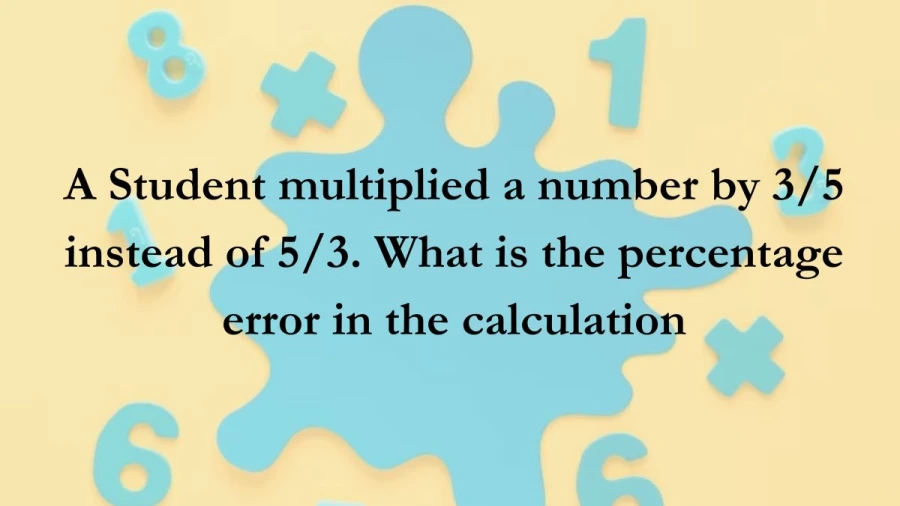If you happen to be viewing the article A Student multiplied a number by 3/5 instead of 5/3. What is the percentage error in the calculation? ? on the website Math Hello Kitty, there are a couple of convenient ways for you to navigate through the content. You have the option to simply scroll down and leisurely read each section at your own pace. Alternatively, if you’re in a rush or looking for specific information, you can swiftly click on the table of contents provided. This will instantly direct you to the exact section that contains the information you need most urgently.
See the mistake a student made by multiplying with 3/5 instead of 5/3. Figure out how much the calculation is wrong in percentage terms.
A Student multiplied a number by 3/5 instead of 5/3. What is the percentage error in the calculation?
The percentage error in the calculation is 64%
Explanation
Let’s call the number the student multiplied by “x”.
- The correct calculation would be: x * (5/3)
- The student’s calculation was: x * (3/5)
The difference between these two calculations is:
(x * 5/3) – (x * 3/5) = (25x – 9x) / 15 = 16x / 15
To find the percentage error, we divide this difference by the correct calculation and multiply by 100%:
(16x / 15) / (x * 5/3) * 100% = (16x * 3 * 100%) / (15 * 5x) = 64%
Therefore, the percentage error in the calculation is 64%.
What is Percentage Error in Mathematics?
In mathematics, percentage error tells you how big the difference is between an estimated value and the actual value, expressed as a percentage of the actual value. It helps you understand how precise or accurate your estimation or measurement is.
Here’s how it works:
Formula:
Percent Error = |(Estimated Value – Actual Value)| / Actual Value * 100
Where:
- | | – represents absolute value (ignoring any negative sign)
- Estimated Value – the value you obtained through estimation or measurement
- Actual Value – the true or accepted value
Steps to calculate:
- Find the absolute difference between the estimated and actual values.
- Divide that difference by the actual value.
- Multiply the result by 100 to express it as a percentage.
Interpretation:
- A smaller percentage error indicates that your estimated value is closer to the actual value, meaning your estimation or measurement is more accurate.
- A larger percentage error indicates a bigger difference between the estimated and actual values, meaning your estimation or measurement is less accurate.
Example:
You estimate the length of a table to be 1.5 meters, but when you measure it, you find it’s actually 1.6 meters.
- Percent Error = |(1.5m – 1.6m)| / 1.6m * 100
- Percent Error = 0.1m / 1.6m * 100
- Percent Error ≈ 6.25%
This means your estimate was off by about 6.25% from the actual length.
Applications:
- Science experiments: When measuring different quantities, understanding the percentage error helps assess the reliability of your data.
- Engineering: Estimating material properties or dimensions often involves some error, and percentage error helps quantify how precise the estimate is.
- Everyday life: Comparing prices of similar products, estimating distances or quantities, etc., can all involve some level of error, and percentage error helps analyze that difference.
Thank you so much for taking the time to read the article titled A Student multiplied a number by 3/5 instead of 5/3. What is the percentage error in the calculation? written by Math Hello Kitty. Your support means a lot to us! We are glad that you found this article useful. If you have any feedback or thoughts, we would love to hear from you. Don’t forget to leave a comment and review on our website to help introduce it to others. Once again, we sincerely appreciate your support and thank you for being a valued reader!
Source: Math Hello Kitty
Categories: Math

